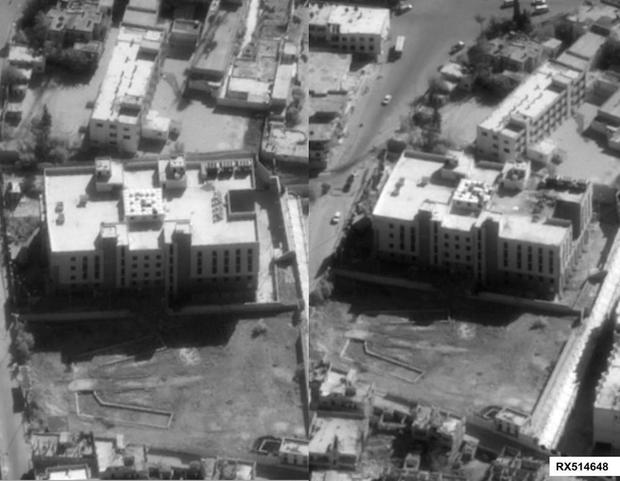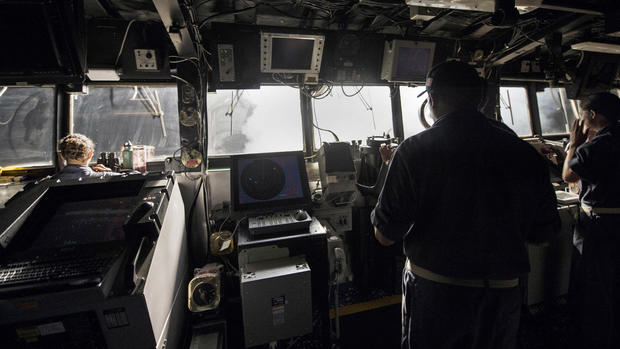How the U.S.-led airstrikes in Syria went down
The United States and five Arab allies took advantage of a dark, moonless night to expand attacks against the Sunni terror group Islamic State of Iraq and Syria into Syria itself.
President Obama stressed Tuesday this is just the beginning of a long campaign to destroy ISIS.
The allied attacks overnight involved the U.S., Bahrain, Jordan, Saudi Arabia, Qatar, and the United Arab Emirates.
Islamic State of Iraq and Syria (ISIS) targets were hit.
The U.S., acting alone, launched eight strikes against another terror group -- an al Qaeda offshoot called Khorasan.
The desert bloomed with fireballs as cruise missiles and precision guided weapons --- some of them launched by Arab aircraft -- hit an ISIS training area in eastern Syria.
That strike took place near the end of a four-hour aerial assault which began with cruise missiles launched from U.S. Navy ships and included the first shots ever fired by America's newest, most sophisticated aircraft -- the F-22 stealth fighter.
Lt. Gen. William Mayville, the Pentagon's director of operations, used before and after photos to show what a satellite guided bomb from an f-22 did to a building ISIS used as a headquarters.
"You can see the command and control center where it was located in the building was destroyed," Mayville said.
You have to look closely at before and after pictures of an ISIS finance center to see what a cruise missile did to its satellite dishes.
"The rooftop communications is heavily damaged while the surrounding structure remains largely intact," Mayville said.
A total of 168 weapons struck targets from Aleppo in the northwest, eastward to the ISIS stronghold of Raqqa and further east toward the border with Iraq.
The strikes around Aleppo were aimed at a second terrorist group called Khorasan, an organization of al Qaeda veterans U.S. intelligence believed was plotting attacks against Europe and the U.S.
Tthe strikes hit what they aimed at, but ISIS will dig out.
"They will adapt to what we've done and seek to address the shortfalls and gaps against our air campaign in the coming weeks," Mayville said.
Last night's strikes inside Syria were by no means the last.
"You are seeing the beginnings of a sustained campaign and strikes like this in the future can be expected," Mayville said.
At the very end of last night's strikes, U.S. aircraft spotted two ISIS trucks out in the open and attacked them, destroying one and damaging the other.

